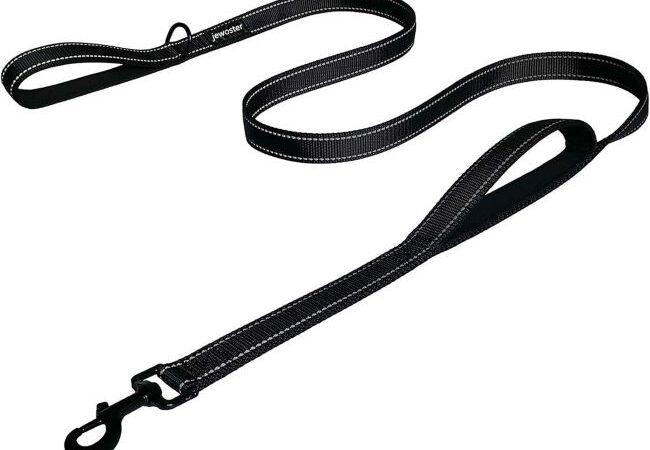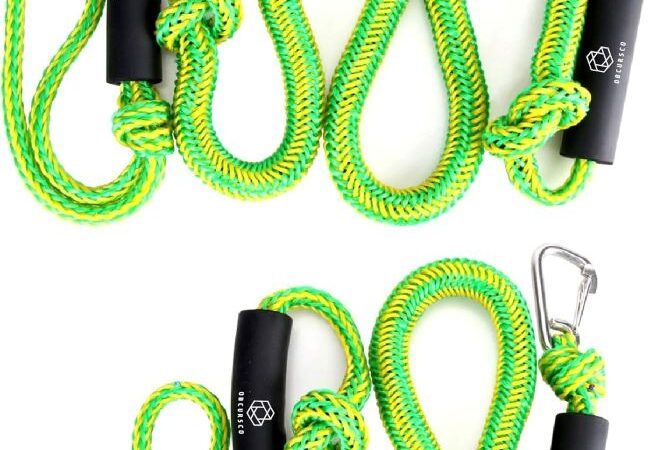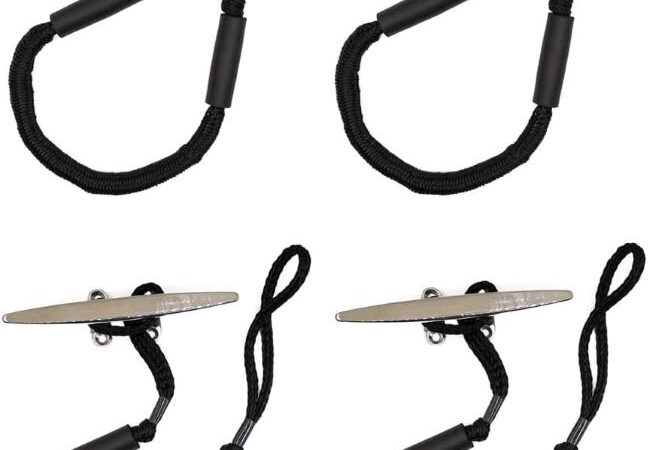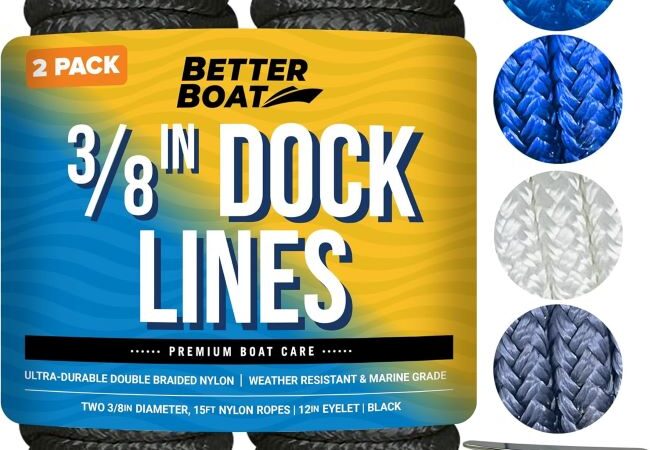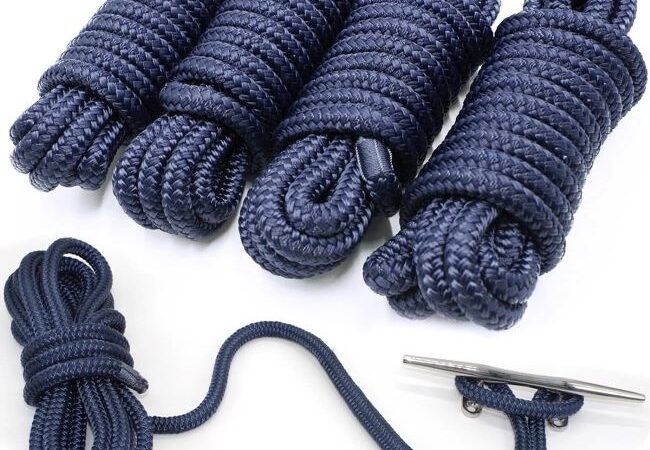
Static Climbing Rope by the Foot: A Comprehensive Guide
Embarking on a journey up a towering rock face, suspended only by a thread-like lifeline, is a pursuit that unites thrill-seekers and adventurers alike. At the heart of this adrenaline-fueled endeavor lies the unsung hero: the static climbing rope by the foot. In this comprehensive guide, we delve into the intricacies of this essential tool, unearthing its hidden marvels and shedding light on its often overlooked significance.
Contents at a Glance
ToggleWhether you’re a novice or a seasoned climber, our exploration of the climbing rope by the foot promises to kindle your curiosity, stoke the flames of your climbing passion, and guide you toward making informed choices. So, gear up as we unravel the enthralling world of the static climbing rope by the foot, where safety meets adventure, one rope by the foot at a time.
Understanding Static Climbing Ropes
Static climbing ropes, also known as low-stretch ropes, are designed to minimize rope elongation under load. Unlike dynamic ropes used in activities like lead climbing, where some stretch is desirable to absorb falls, static ropes are intended to remain relatively rigid when force is applied. This property makes them ideal for scenarios requiring steady and controlled movement, such as rappelling or hauling heavy loads.
Benefits of Using Static Climbing Rope
Durability and Longevity
Static ropes are constructed with durability in mind. They are engineered to withstand abrasion, sharp edges, and challenging terrains. This makes them an excellent choice for environments where the rope is likely to come into contact with rough surfaces.
Low Stretch Factor
One of the defining features of static ropes is their minimal stretch. This lack of elongation ensures that the rope remains taut and predictable, making it suitable for scenarios where precise positioning and minimal movement are essential.
Superior Strength
Static ropes are manufactured to be exceptionally strong, capable of supporting heavy weights without compromising their integrity. This attribute is especially important in situations where life may depend on the rope’s strength, such as rescue operations or industrial settings.
Applications of Static Climbing Ropes
Search and Rescue Operations
In search and rescue missions, static ropes are invaluable tools. They allow rescuers to safely lower themselves into challenging environments, retrieve individuals from difficult-to-reach locations, and execute controlled extractions.
Industrial Work
Construction, maintenance, and telecommunications industries often require workers to be suspended at heights. Static ropes provide the stability and reliability needed for workers to perform their tasks safely and efficiently.
Top-Rope Climbing
Top-rope climbing, a popular activity in climbing gyms and outdoor settings, involves the use of a static rope anchored at the top of a route. This setup offers a stable climbing experience, making it an ideal choice for beginners and those looking to improve their skills.
Factors to Consider When Choosing a Static Climbing Rope
Diameter and Thickness
The diameter of a static rope plays a significant role in its performance. Thicker ropes offer increased strength and durability, making them suitable for heavy-duty applications. However, they may also be heavier and less flexible.
Material Composition
Static ropes can be made from various materials, including nylon and polyester. Each material has its own set of characteristics, such as resistance to UV light, moisture absorption, and overall durability.
Weight Capacity
Before purchasing a static rope, knowing its weight capacity is crucial. Exceeding the rope’s rated weight limit can lead to catastrophic failure, endangering the climber and anyone nearby.
Proper Care and Maintenance of Static Climbing Ropes
Regular Inspection
Frequent inspection of your static rope is essential for identifying signs of wear and damage. Look for frayed areas, cuts, or other irregularities that could compromise the rope’s strength.
Cleaning and Storage
Keeping your static rope clean and properly stored prolongs its lifespan. Wash the rope with mild soap and water if it becomes dirty, and store it in a cool, dry place away from direct sunlight.
Retiring Old Ropes
Static ropes have a finite lifespan. Retaining your rope once it shows signs of significant wear is crucial, as continued use could lead to failure during critical moments.
Static Ropes vs. Dynamic Ropes: Understanding the Difference
The distinction between static and dynamic ropes lies in their elongation properties. While static ropes have minimal stretch, dynamic ropes are designed to absorb energy from falls, reducing the impact on the climber. The key differences between static ropes and dynamic ropes:
| Feature | Static Rope | Dynamic Rope |
|---|---|---|
| Stretch | Very little stretch (2-5%) | High stretch (8-10%) |
| Use | Abseiling, rappelling, fire rescue, caving, hauling | Top roping, lead climbing, bouldering |
| Impact absorption | Poor | Excellent |
| Weight | Lighter | Heavier |
| Price | Cheaper | More expensive |
As you can see, static ropes and dynamic ropes are designed for very different purposes. Static ropes are not designed to stretch much, making them ideal for situations where a controlled descent is important, such as abseiling or rappelling. Dynamic ropes, on the other hand, are designed to stretch to absorb the impact of a falling climber, making them essential for top roping and lead climbing.
Here is a more detailed explanation of the key differences between static ropes and dynamic ropes:
- Stretch: Static ropes stretch very little, while dynamic ropes stretch much more. This is because dynamic ropes are designed to absorb the impact of a falling climber. When a climber falls, the dynamic rope stretches, which helps to reduce the force of the impact on the climber’s body. Static ropes do not stretch as much, so they do not provide as much impact absorption.
- Use: Static ropes are typically used for abseiling, rappelling, fire rescue, caving, and hauling. Dynamic ropes are typically used for top roping and lead climbing. Static ropes are not designed for top roping or lead climbing, as they do not provide enough impact absorption.
- Impact absorption: Dynamic ropes are much better at absorbing the impact of a falling climber than static ropes. This is because dynamic ropes stretch more, which allows them to absorb more energy from the impact. Static ropes do not stretch as much, so they do not provide as much impact absorption.
- Weight: Static ropes are typically lighter than dynamic ropes. This is because dynamic ropes have thicker fibers to accommodate their greater stretch. Static ropes, such as fire rescue and caving, are often used for applications where weight is a concern.
- Price: Dynamic ropes are typically more expensive than static ropes. This is because dynamic ropes are made with higher-quality materials and require more complex manufacturing processes.
How to Calculate the Length of Rope You Need
Calculating the required rope length depends on the specific activity you’re engaging in. For rappelling, you’ll need a longer rope compared to top-rope climbing. Always ensure you have enough rope to complete your intended task safely.
To calculate the length of rope you need for rappelling, you will need to know the following:
- The height of the rappel: This is the distance from the top of the rappel anchor to the bottom of the rappel anchor.
- The amount of rope you will need to manage: This will depend on the type of rappel you are doing and your personal preferences. For example, if you are doing a single-rope rappel, you will need to allow for some extra rope to manage the rappel device and to tie off the end of the rope.
- The safety factor: This is the amount of extra rope you will need to account for unexpected events, such as a rope slip or a knot coming undone. The safety factor is typically 1.5-2 times the height of the rappel.
Once you know these values, you can use the following formula to calculate the length of rope you need:
Length of rope = (Height of rappel + Amount of rope to manage) x Safety factor
For example, if you are rappelling from a 100-foot cliff, and you want to allow for 10 feet of rope to manage, and you want a safety factor of 2, you will need a rope that is at least 210 feet long.
Length of rope = (100 feet + 10 feet) x 2 = 210 feet
It is always a good idea to err on the side of caution and to get a rope that is longer than you think you need. This will give you peace of mind and will help to ensure that you are safe.
Best Static Climbing Rope by Foot
Climbing is an exhilarating sport that demands the right equipment for safety and success. A crucial piece of gear is the static climbing rope, which provides stability and support during your ascent. Let’s delve into some top choices for the best static climbing ropes available by foot.
Mammut Infinity Dry
The Mammut Infinity Dry is a pinnacle of innovation in climbing ropes. Crafted with a high-performance dry treatment, it resists water absorption and repels dirt, ensuring durability in challenging conditions. Its exceptional abrasion resistance makes it a reliable companion for rugged terrains. Available in lengths ranging from 50 to 150 feet, the Mammut Infinity Dry caters to various climbing needs.
BlueWater Spark
For climbers seeking a lightweight yet robust option, the BlueWater Spark stands out. Its high-tenacity core is encased in a durable sheath, offering the perfect balance of strength and weight. This rope is an excellent choice for long climbs, ensuring endurance and reliability throughout your journey. Available in lengths from 50 to 150 feet, the BlueWater Spark adapts to different climbing scenarios.
Edelrid Boa Eco Dry
Environmental consciousness meets climbing excellence with the Edelrid Boa Eco Dry. Crafted from a recycled PET core and sheath, this rope not only reduces its environmental impact but also provides exceptional performance. Lightweight and water-resistant, it offers reliability without compromising on sustainability. Choose from lengths ranging from 50 to 150 feet and embark on your climbing adventures guilt-free.
Gossamer Gear Static Line
The Gossamer Gear Static Line boasts high-quality nylon construction, ensuring strength and durability for climbers tackling various challenges. Its lightweight design makes it a suitable choice for lengthy climbs where weight matters. With lengths available from 50 to 150 feet, this rope adapts to different climbing styles while maintaining its robustness.
Petzl Arial
The Petzl Arial is a testament to cutting-edge engineering in climbing ropes. Its high-performance core is encased in a durable sheath, offering outstanding abrasion resistance and durability in harsh environments. Available in lengths from 50 to 150 feet, the Petzl Arial is a versatile option for climbers who demand both performance and longevity.
Tips for Beginners: Using Static Ropes Safely and Effectively
Follow the tips for beginners on how to use static ropes safely and effectively:
- Get proper training. It is important to get proper training from a qualified instructor before using static ropes. This will teach you the proper techniques for using static ropes and how to be safe in a variety of situations.
- Use the right equipment. Make sure you are using the right equipment for the type of climbing you will be doing. This includes a static rope that is rated for the weight of the climber and the type of climbing.
- Inspect your equipment regularly. Before each use, inspect your static rope for any signs of wear or damage. If you see any damage, do not use the rope.
- Be aware of your surroundings. When using static ropes, it is important to be aware of your surroundings and to avoid any potential hazards. This includes things like sharp rocks, loose ground, and overhead obstacles.
- Use a backup system. It is always a good idea to use a backup system when using static ropes. This could be a second rope, a belay device, or a personal anchor system.
- Be prepared for the unexpected. Things don’t always go according to plan when you’re out in the wilderness, so it’s important to be prepared for the unexpected. This includes things like getting lost, getting injured, or encountering bad weather.
Breaking Down the Cost: Is Investing in a Static Rope Worth It?
Whether or not investing in a static rope is worth it depends on a few factors, including your budget, the type of climbing you will be doing, and your safety needs.
Static ropes can range in price from around $50 to $200. If you are on a tight budget, you may be able to find a good quality static rope for around $100. However, if you are serious about climbing and want the best possible safety, you may want to invest in a more expensive rope.
The type of climbing you will be doing will also affect the cost of the static rope you need. If you will be doing basic climbing, such as top roping or rappelling, you can get away with a less expensive rope. However, if you will be doing more technical climbing, such as multi-pitch climbing or ice climbing, you will need a more expensive rope.
Finally, your safety needs will also affect the cost of the static rope you need. If you are a beginner climber, you may be able to get away with a less expensive rope. However, if you are an experienced climber who is concerned about safety, you may want to invest in a more expensive rope that is made from high-quality materials and has a high safety rating.
Common Myths and Misconceptions About Static Ropes
Here are the common myths and misconceptions about static ropes:
- Static ropes are always thicker than dynamic ropes. This is not always true. There are static ropes that are thinner than some dynamic ropes. The thickness of a rope is determined by its diameter, not its type.
- Static ropes are always stronger than dynamic ropes. This is also not always true. The strength of a rope is determined by its construction, not its type. Some dynamic ropes are stronger than some static ropes.
- Static ropes are always more expensive than dynamic ropes. This is not always true. There are static ropes that are less expensive than some dynamic ropes. The price of a rope is determined by a variety of factors, including its construction, materials, and brand.
- Static ropes are only used for rappelling. This is not true. Static ropes can be used for a variety of activities, including rappelling, belaying, hauling, and rescue.
- Dynamic ropes are only used for top roping and lead climbing. This is also not true. Dynamic ropes can be used for a variety of activities, including top roping, lead climbing, and bouldering.
- Static ropes are not as safe as dynamic ropes. This is not true. Static ropes are just as safe as dynamic ropes, as long as they are used for the correct application.
- Static ropes cannot absorb shock as well as dynamic ropes. This is true. Static ropes do not stretch as much as dynamic ropes, so they cannot absorb shock as well. However, this does not make them unsafe. Static ropes are designed for applications where shock absorption is not as important, such as rappelling and belaying.
- Static ropes are not as durable as dynamic ropes. This is not true. Static ropes can be just as durable as dynamic ropes, as long as they are used for the correct application and properly cared for.
- Static ropes are not as versatile as dynamic ropes. This is not true. Static ropes can be used for a variety of activities, just like dynamic ropes. The type of rope you choose will depend on the specific activity you are doing.
- Static ropes are always more difficult to handle than dynamic ropes. This is not true. Static ropes can be just as easy to handle as dynamic ropes, as long as you are used to using them.
Conclusion
In the realm of vertical adventures, your journey is only as secure as the static climbing rope by the foot that binds you to the crag. As we’ve traversed through the intricacies of this comprehensive guide, your interest has undoubtedly been piqued by the unparalleled strength and dependability offered by a climbing rope by the foot.
Imagine the peace of mind that comes with knowing each fiber is a testament to meticulous craftsmanship, meticulously designed to withstand the harshest conditions nature throws your way. The desire to elevate your climbing pursuits pulses within, ignited by the assurance that your safety is upheld by a dynamic blend of technology and expertise.
Now, it’s time for action – to secure your grip on the rugged path ahead with a static climbing rope by the foot that epitomizes both durability and innovation. Embrace the heights, for you’re armed with knowledge and a rope that’s your steadfast companion in conquering summits anew.
FAQs
Q: How often should I inspect my static climbing rope?
A: Regular inspection is essential; perform a thorough check before each use and a more detailed inspection periodically.
Q: Can I use a static rope for lead climbing?
A: No, static ropes are not designed for lead climbing due to their minimal stretch.
Q: What is the average lifespan of a static climbing rope?
A: The lifespan varies based on usage and care, but retiring a rope after 5 years of regular use is a general guideline.
Q: Can I wash my static rope in a washing machine?
A: No, it’s recommended to wash your rope by hand using mild soap and water.
Q: Are there any specific guidelines for storing static climbing ropes?
A: Store your rope away from direct sunlight, moisture, and extreme temperatures to prolong its lifespan.






